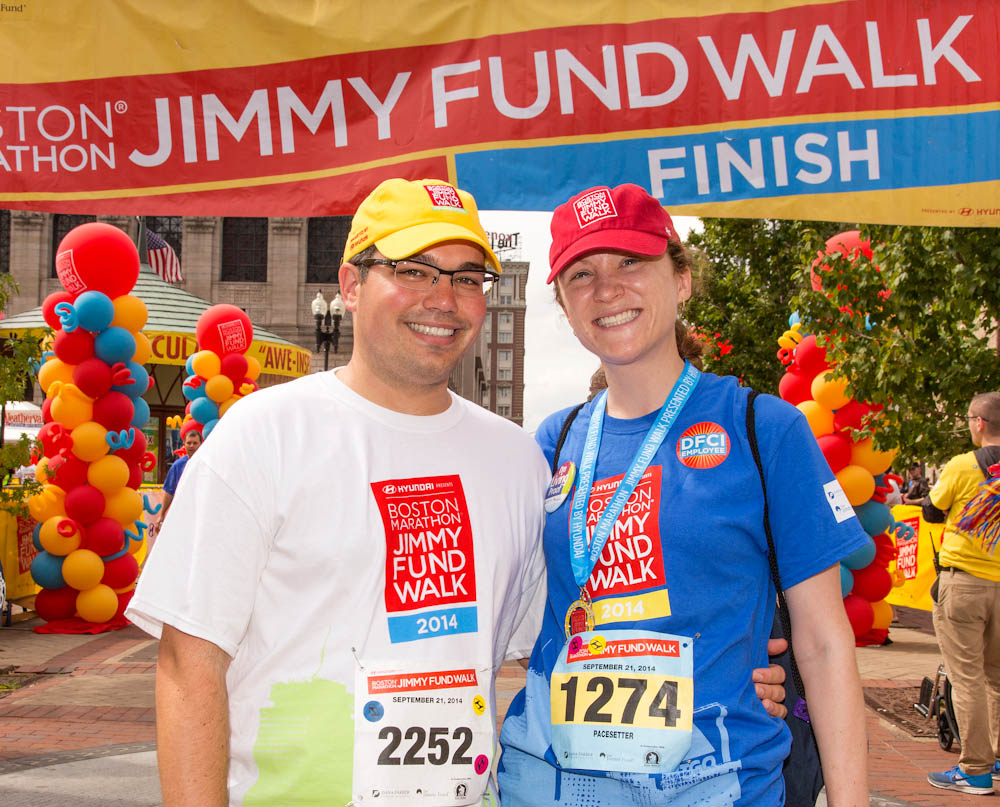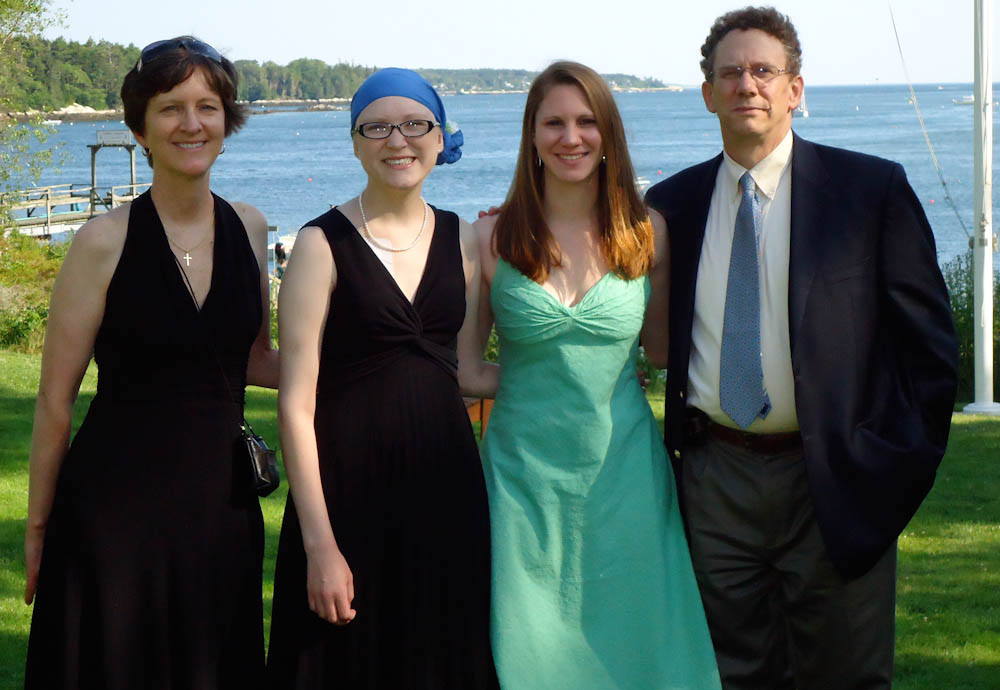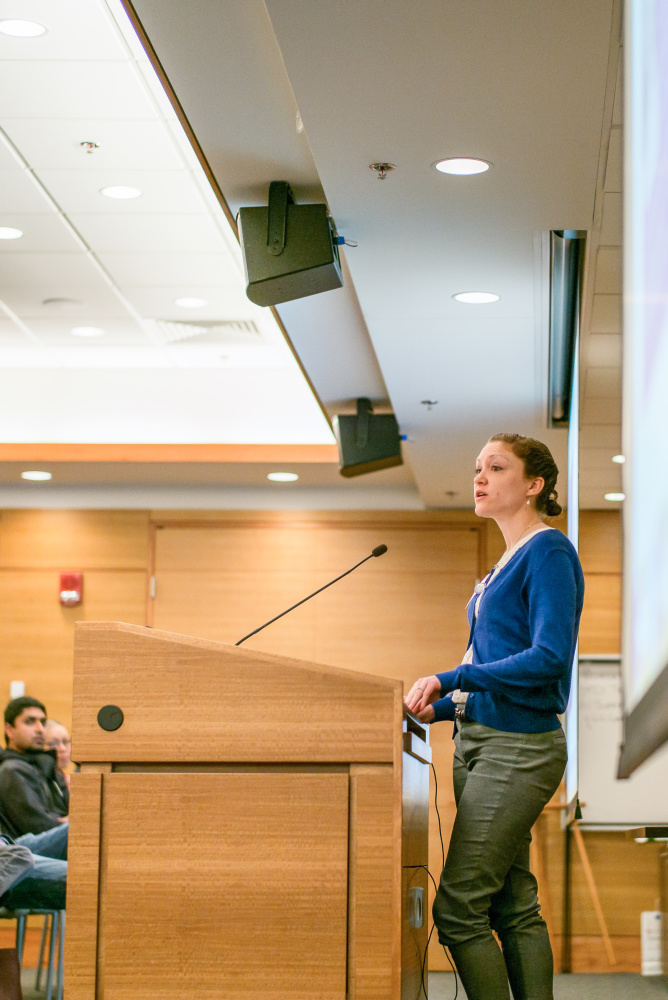
By Katherine Walsh
When faced with something as scary and life-changing as a cancer diagnosis, the way we see the world drastically changes. My story is a literal shift – from cancer researcher to leukemia patient, and a very sick one at that.
My world came to a screeching halt in September 2010, when at age 23, just one year after beginning my graduate studies at Harvard Medical School, I was diagnosed with ALL – acute lymphoblastic leukemia. Instead of being in a Dana-Farber lab conducting cutting-edge research, I began an intensive two-year chemotherapy regimen, which required many hospital stays, debilitating treatments, and a move back home with my parents. I had been so excited to fulfill my goals; now, in the very halls I had walked as a researcher, I was being pushed in a wheelchair. My world had shifted in a dramatic way, and I had to stop being a scientist and start being a patient.
As a young adult with cancer, my developing identity – as a scientist and a person – was challenged by the intrusion of cancer. Learning how my diagnosis would change me took time, patience, and a wonderful community like the Young Adult Program at Dana-Farber (YAP).
Read more:
While each diagnosis is different, all young adults’ lives shift in radical ways when we hear “you have cancer.” Like many others, my cancer evoked a new vulnerability that was completely foreign to me. As a healthy college student, my ailments were usually cured by some ibuprofen, rest, or a phone call to my mother. After my diagnosis, I was immediately faced with my own mortality and the possibility that my life might be shorter than I had imagined.
This vulnerability was accompanied by an intense need for help. I had to move back to my parents’ home to receive round-the-clock help with the most basic tasks. My parents bent over backwards to find foods I could eat that wouldn’t exacerbate nausea or aggravate my mouth sores. Additionally, my mom administered twice-daily injections, which meant I couldn’t be separated from her for more than 12 hours — yet another blow to my quickly fading independence. Even my younger sister got involved, driving me to appointments in a poignant role reversal between older and younger sibling.

Even more difficult to cope with was the need for emotional guidance. About six months into my treatment I woke up one day unable to swallow any of the dozen-plus pills that were essential to my care. The anxiety surrounding my treatment, side effects, and vulnerability became so overwhelming that I lost control of my ability to perform such a routine task. I began to see Karen Fasciano, PsyD, who taught me to deal with my anxiety in a way that helped me swallow my pills and, over time, recognize and overcome the anxiety that naturally came with treatment. Realizing I needed help, and then accepting that help, was a huge hurdle for me.
Despite my loved ones’ best intentions, I often felt alone during treatment. While my peers were progressing through the natural milestones that come in your 20s — such as career development, finishing grad school, and getting engaged — I was at my parents’ house, struggling to walk up stairs or eat a piece of toast. The challenges I faced were so different from my friends’ that it became hard to relate to them. It was through my first “cancer friend” that I began to understand the importance of connecting with other young adult patients. This first friend made a huge difference in my life – commiserating with me when I felt sick, encouraging me when I felt sad, and acknowledging and validating my feelings in a way that none of my well-meaning friends or family could.

Through YAP’s Young Adult Cancer Conference, support group, and online community, I finally found a group of people my age who “got it,” who knew what it was like to have their lives derailed. This community played, and still plays, a huge part in my healing. We have different diagnoses, treatment plans, and overall life goals, but our shared experience has bonded us in a deep way. We celebrate each others’ victories, and we share many of the same fears.
Through these friendships, the unwelcome experience of cancer has left a wonderful impact on my life, and these relationships begin to help me make some sense of this crazy cancer experience. And now that I’ve learned what it means to be both scientist and patient, I’m more passionate than ever about bringing better cancer therapies from the lab bench to the patient bedside I know so well.
